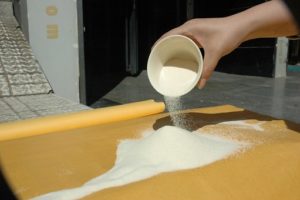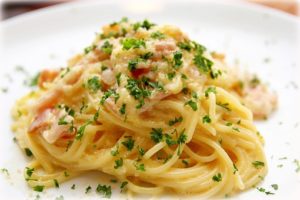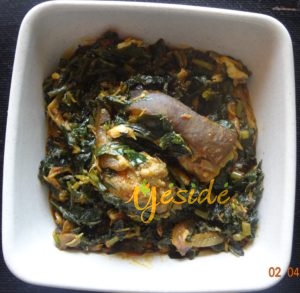
Semolina is a product that has come to stay in Nigeria. It has become a popular stiff porridge or ‘swallow’ and it is popularly called Semo. Do you really know what Semolina is made from and is it nutritious?

Semolina is produced by grinding or milling of the durum wheat in a process where the bran (outer layer of the grain) and the germ (embryo of the grain contains lots of nutrients) are removed and the remainder is processed to a degree of fineness.
For whole durum wheat semolina, the bran and part of the germ are retained.
To shed more light on Durum wheat, durum wheat is the type of wheat commonly used to make pasta or macaroni, couscous and bulgur. It is the second most popular type of wheat produced in the world and it is different from the common wheat that is used for making bread.
Durum wheat has a larger and harder grain than the common wheat. It also has higher protein content than the common wheat. However, the gluten content is much lower than the common wheat used for bread. Interestingly, Semolina can also be made from soft wheat and it is often called Farina.
When durum wheat is milled, it is separated into the brain, germ, semolina (endosperm) and flour (fine semolina flour).
Semolina is yellow or off-white in colour. In Nigeria, it is made into a stiff porridge ‘swallow’ and eaten with different soups. It is also used in producing spaghetti, macaroni, couscous and other pasta products we enjoy. In other countries, Semolina is also used to make desserts and other sweet dishes used in different parts of the world.

Nutritional content of semolina
Semolina is mostly carbohydrates (72.8g in 100g of semolina) and has just 3.9g of dietary fibre. The protein content is 12.7g and fat content is very low. In terms of micronutrients, it has small contents of various micronutrients but the most prominent ones are vitamin B1, Vitamin B3, Vitamin B9, Magnesium, phosphorus and zinc.
For whole wheat durum semolina, fibre content is higher (as high as 8-12g) and it is more nutritious that the semolina in which other important nutrients have been removed.
To know whole wheat durum, check the label of the products that you buy. If it is not stated as whole wheat durum semolina, then it is not.
Brands that make pasta like spaghetti, macaroni and other types of pasta sold in Nigeria sometimes write ‘made from Durum’ on the product. This way, you know that its semolina that you are eating and not the common wheat.
What you should take note of
The glycemic index of spaghetti, couscous and like products are low (less than 55). This says that they will not spike your blood sugar quickly the way glucose or white bread would. This is good. However, take note that the glycemic load on the other hand depends on how much of the spaghetti or semolina that you eat. 2 cups of boiled spaghetti has a higher glycemic load that ½ cup of spaghetti. The deal is that the lower the glycemic load, the better for you.

Also, normally, you are not expected to eat semolina or its products alone. You are expected to combine them with other nutritious foods like vegetables, proteins (plant or animal) and fruits too. When you incorporate other food groups into your semolina, you diversify and thus increase your access to more nutrients and fibre (especially if you add vegetables and legumes).
You can also reduce the glycemic load so as long as you are eating a well-balanced, moderate quantity and good quality of a variety of foods along with your semolina. This way, you have nothing to worry about.
As always, don’t forget to eat better and to live better.
Note: If you are diabetic or have an issue with glucose sensitivity or have gluten allergies or sensitivities, consult your dietitian before incorporating new types of carbohydrates into your diet.



This is highly educative. I gained from this. Thanks for the enlightenment.
Thanks for reading Sis.
I found this very educative. Thanks sis for sharing